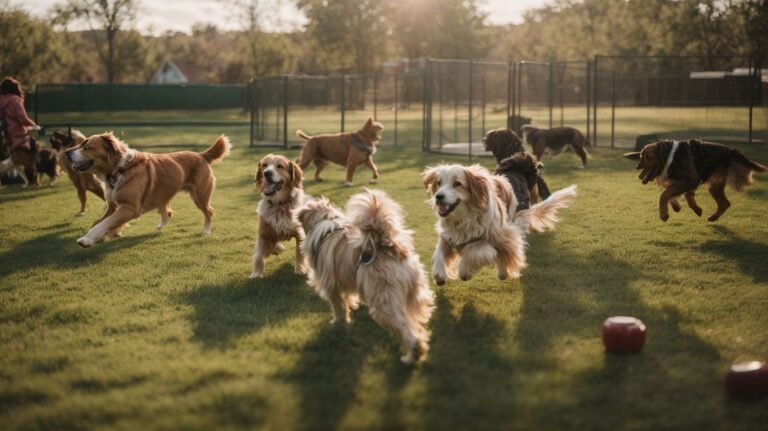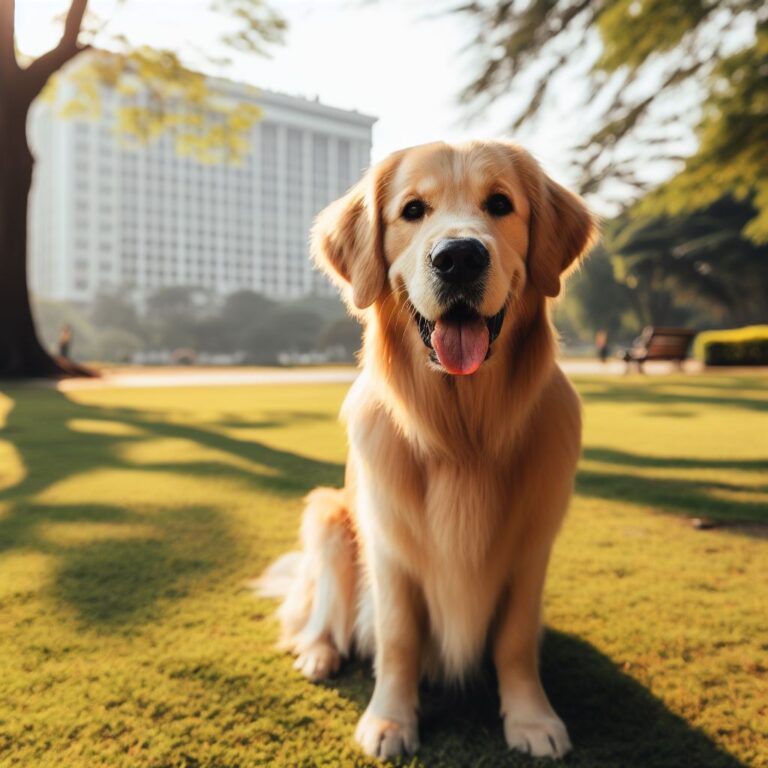Dog Park Reno
- Dog Park Philadelphia - February 28, 2024
- Dog Park San Antonio - February 27, 2024
- Dog Park Indianapolis - February 26, 2024
The Benefits of a Well-Designed Dog Park
Dog parks are more than just open spaces for dogs to run and play; they offer a multitude of benefits for both dogs and their owners. A well-designed dog park provides a safe and controlled environment where dogs can socialize and interact with other dogs, improving their overall behavior and reducing instances of aggression. Regular visits to a dog park also help dogs burn off excess energy, reducing the likelihood of destructive behavior at home. Additionally, dog parks offer a great way for owners to meet and connect with other dog lovers, fostering a sense of community and support.
Moreover, a well-designed dog park can greatly benefit the physical and mental health of dogs. The availability of various activities and play structures in the park can help to keep dogs mentally stimulated, preventing boredom and associated behavioral issues. Dogs that have access to a well-designed dog park are also more likely to engage in regular exercise, which is crucial for their overall well-being. Regular physical activity can help dogs maintain a healthy weight, improve cardiovascular health, and reduce the risk of certain diseases. Ultimately, a well-designed dog park offers a range of benefits that enhance the lives of both dogs and their owners.
Key Considerations for Renovating a Dog Park
When renovating a dog park, there are several key considerations that need to be taken into account. Firstly, it is important to assess the current condition and layout of the park. This will help determine the extent of renovations required and the areas that need attention. It is crucial to consider the safety aspects of the park, such as ensuring that there are no hazards or potential dangers. This may involve repairing or replacing damaged fencing, addressing any uneven surfaces, and removing any toxic plants or substances.
In addition to safety, the usability and functionality of the dog park should also be considered. This includes examining the accessibility of the park for both dogs and their owners. Providing clear pathways, adequate lighting, and accessible entrances and exits are essential to accommodate all park users. Furthermore, incorporating amenities such as water stations, waste disposal systems, and seating areas for dog owners can greatly enhance the overall experience of the park. These considerations contribute to creating a well-designed and enjoyable environment for both dogs and their owners.
Maximizing Safety and Security in Dog Park Renovations
When renovating a dog park, it is crucial to prioritize safety and security to ensure a positive experience for both dogs and their owners. Implementing measures to maximize safety can help prevent accidents and minimize the risk of any potential harm.
One key consideration is the installation of proper fencing around the park. A sturdy and secure fence is essential to keep dogs contained within the designated area and prevent them from wandering off or entering unsafe zones. The fence should be tall enough to prevent dogs from jumping over and made of materials that are difficult to chew or dig through. Regular maintenance and inspections should also be conducted to check for any damages or weak spots in the fence that may compromise its effectiveness. Additionally, having clearly marked entrances and exits with functional gates will help control access and minimize the risk of dogs escaping unintentionally.
Designing an Engaging and Stimulating Environment for Dogs
Dog parks play a significant role in providing dogs with an environment that promotes physical activity and mental stimulation. Designing an engaging and stimulating environment for dogs involves carefully considering various elements that can cater to their needs. One important aspect to focus on is the layout of the park. Incorporating different zones and sections within the park can provide dogs with a diverse range of experiences and activities. For instance, having open grassy areas where dogs can freely run and play fetch, as well as including obstacle courses and agility equipment, can help keep dogs physically active while also challenging their problem-solving skills.
In addition to the layout, it is crucial to consider the materials used in the park. Opting for durable and dog-friendly surfaces, such as artificial turf or gravel, can provide a comfortable and safe environment for dogs to move around in. Moreover, adding interesting sensory elements like interactive water features, sand pits, or digging areas can further enhance the engagement and stimulation for dogs. By incorporating elements that appeal to their instincts and natural behaviors, such as scent posts or hiding spots, dogs can have a truly immersive and enriching experience within the park.
Incorporating Amenities for Dog Owners in Park Renovations
In any dog park renovation, it is essential to not just focus on the needs of the dogs, but also consider the comfort and convenience of their owners. Incorporating amenities for dog owners in park renovations can greatly enhance their overall experience.
One important amenity to consider is seating areas. Dog owners often spend a significant amount of time at the park, so having comfortable seating options is crucial. Benches or picnic tables strategically placed throughout the park give owners a place to relax while keeping an eye on their furry companions. Additionally, providing shaded areas can offer respite from the sun on hot days, ensuring a more enjoyable experience for both dogs and their owners.
A second important amenity for dog owners is access to water. It is essential to have readily available water sources throughout the park for both humans and canines. Installing drinking fountains with a spout for humans and a lower basin for dogs will make it convenient for owners to keep their pets hydrated. Additionally, adding pet waste stations with bags and trash cans will promote responsible dog ownership and maintain cleanliness in the park.
Ensuring Accessibility and Inclusivity in Dog Park Designs
Dog parks play an essential role in promoting inclusivity and accessibility for all members of the community, including those with disabilities. When designing dog parks, it is crucial to consider the needs of individuals with mobility impairments or other disabilities to ensure that they can fully participate in the park activities. Implementing features such as paved pathways throughout the park can provide smooth surfaces for wheelchair users and reduce the risk of tripping for all visitors. Ramps or gentle slopes should be incorporated to ensure that individuals with mobility aids can easily access different areas of the park. Furthermore, it is important to provide ample seating areas throughout the park, including benches with backs and armrests, to accommodate individuals with limited mobility.
To further enhance accessibility, clear signage with braille or raised lettering should be installed to guide individuals with visual impairments. The placement of signs should be strategic, considering the most convenient and visible locations. Additionally, offering ample shade and water stations is crucial for the comfort of both dogs and their owners, allowing everyone to enjoy the park without compromising their well-being. By implementing these design considerations, dog parks can provide an inclusive and accessible environment where people of all abilities can appreciate the joys of spending time with their furry friends.
Creating Separate Areas for Small and Large Dogs
One of the key considerations when designing and renovating a dog park is the creation of separate areas for small and large dogs. This ensures the safety and enjoyment of all canine visitors, accommodating their differing sizes, energy levels, and play styles.
Separating dogs based on their size is essential to prevent accidents and potential conflicts. Small dogs may feel intimidated or overwhelmed if they are forced to interact with larger, more boisterous dogs, while larger dogs may unintentionally cause harm to smaller ones during play. By designating separate spaces, each group can engage in appropriate activities without the risk of injury or discomfort. Additionally, this setup allows small dogs to have their own safe haven and provides owners with peace of mind, knowing that their pets can interact with others of similar size and temperament.
Maintaining Cleanliness and Hygiene in Dog Parks
When it comes to maintaining cleanliness and hygiene in dog parks, there are several key factors to consider. First and foremost, it is important to have a sufficient number of waste disposal stations throughout the park. These stations should be strategically placed in areas where dog owners are likely to pass by, making it convenient for them to clean up after their pets. Additionally, it is essential to regularly empty and clean these stations to prevent overflow and odors.
Furthermore, ensuring that there are adequate supplies, such as waste bags and hand sanitizers, available at all times is crucial. Dog owners should be encouraged to use these supplies and dispose of waste properly. Promoting responsible pet ownership through informative signage and educational materials can also play a significant role in maintaining cleanliness and hygiene in the park.
Aside from waste management, maintaining clean and well-maintained grounds is important. Regularly mowing the grass, removing fallen leaves and debris, and keeping pathways clear can contribute to a cleaner and more aesthetically pleasing environment. Moreover, investing in quality drainage systems can help prevent stagnant water and minimize the risk of the spread of diseases.
In conclusion, maintaining cleanliness and hygiene in dog parks is essential for the health and enjoyment of both dogs and their owners. By implementing proper waste management practices, providing necessary supplies, and regularly maintaining the park grounds, dog parks can offer a safe and clean environment for everyone to enjoy.
Sustainable Practices for Dog Park Renovations
Dog park renovations offer a great opportunity to incorporate sustainable practices that can benefit not only the environment but also the well-being of the dogs and the community as a whole. One way to achieve sustainability is through the use of eco-friendly materials. Opting for recycled or locally sourced materials can significantly reduce the carbon footprint associated with the construction process. Additionally, installing energy-efficient lighting systems and water-efficient irrigation systems can help minimize energy and water waste, ensuring a more sustainable operation of the dog park.
Another sustainable practice to consider is the integration of natural elements into the park’s design. Incorporating native plants not only adds beauty to the space but also supports local ecosystems by providing food and habitat for wildlife. Creating shaded areas using trees can help reduce the need for artificial cooling systems, promoting energy conservation. Furthermore, implementing proper waste management systems, such as recycling bins and composting areas, can help reduce the amount of waste generated in the park, contributing to a more sustainable environment overall.
Community Involvement and Engagement in Dog Park Renovations
For any dog park renovation project, community involvement and engagement are essential factors to consider. By actively involving the members of the local community, not only can the renovation efforts gain valuable support, but the end result is also more likely to meet the needs and preferences of the dog owners in the area. Involving the community from the beginning allows for their input and suggestions, ensuring that the renovated dog park will be a space that is truly for the community, by the community.
Engagement can take various forms, such as conducting surveys to gather opinions on desired features and amenities, organizing community meetings or workshops to discuss design plans and gather feedback, or even creating volunteer opportunities for community members to participate in the renovation process. By involving the community, dog park renovations become a collaborative effort that fosters a sense of ownership and pride among local residents. This not only enhances the overall success of the project but also strengthens the bond between the community and their beloved dog park.






